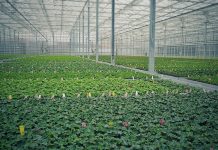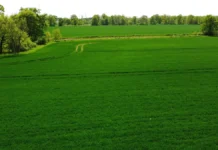Analiza ogrodnicza gleby to koszt około 50 zł/4 ha. Czas rozważyć wraz ze specjalistą firmy Timac Agro – Łukaszem Peroniem, czy opierając żywienie roślin na wynikach analizy chemicznej można zaoszczędzić na nawozach i zbilansować zawartość poszczególnych składników odżywczych w glebie w uprawie kapusty do przechowywania.
Jak ważne jest badanie i analiza gleby wie każdy, kto produkuje warzywa i prowadzi rachunek ekonomiczny produkcji. Efektywne nawożenie powinno być dobrze zaplanowane i oparte na wynikach badania gleby. Z ekonomicznego punktu widzenia pozwala to uzyskiwać wysoki plon warzyw odpowiedniej jakości, uzupełniając wyłącznie składniki pokarmowe, których rzeczywiście brakuje w glebie – czyli racjonalizować wydatki ponoszone na nawozy.
Łukasz Peroń (Timac Agro)
Korzyści środowiskowe to ograniczenie obciążenia gleby nadmiarem składników pokarmowych, a tym samym eutrofizacji wód, a jednocześnie zmniejszenie strat składników pokarmowych z gleby. Działanie takie wpisuje się w wytyczne Komisji Europejskiej o zasobooszczędnym stosowaniu składników pokarmowych, a w szczególności azotu i fosforu oraz dodatkowo w akcję Ministerstwa Rolnictwa i Rozwoju Wsi „Efektywnie gospodaruj nawozami. Stop stratom azotu i fosforu!” Dobrze zaplanowane badanie gleby nie jest kłopotliwe i wiąże się z niewielkim nakładem czasu i pracy na pobranie próbek. Ich analiza z reguły też nie trwa długo.
Przy planowaniu nawożenia należy wziąć pod uwagę następujące czynniki: uprawiany gatunek, zakładaną wielkość plonu, rodzaj gleby, jej zasobność (na podstawie wyników analizy gleby), produkty na jakich chcemy oprzeć nawożenie, możliwości techniczne i finansowe gospodarstwa.
Poniżej przykład zaczerpnięty z gospodarstwa produkującego kapustę głowiastą do przechowywania z okolic Charsznicy (woj. małopolskie). Podczas dyskusji padło pytanie, jakie dawki nawozów producent zastosowałby nie robiąc badań gleby. Następnie badanie zostało wykonane i na podstawie tego ułożono program nawożenia pod zakładaną uprawę.
Tabela1. Wyniki analizy gleby
Producent kapusty standardowo opiera się na dwóch nawozach – Eurofertil TOP 51 NPK oraz Sulfammo 23-N-Process. Pierwszy produkt planował zastosować w ilości 800 kg/ha, natomiast drugi w ilości 600 kg/ha. Bilans takiego nawożenia po odniesieniu go do wyników badań gleby (tabele 1 i 2) przedstawiał się następująco:
• po zastosowaniu nawozów zasobność gleby w azot osiągnęłaby poziom optymalny – ok. 244 kg N/ha (wymagane min. 240 kg/ha),
• zasobność gleby w fosfor byłaby wyższa od zalecanej – ok. 239 kg P/ha (wymagane min. 120 kg/ha),
• zasobność gleby w potas byłaby zbyt niska – ok. 315 kg K/ha (wymagane min. 360 kg/ha),
• siarka byłaby na optymalnym poziomie ok. 129 kg S/ha (wymagane min. 120 kg/ha),
• magnez występowałby w dużym nadmiarze – ok. 344 kg Mg/ha (wymagane maks. 150 kg/ha).
Jak widać, przy zastosowaniu nawożenia orientacyjnego sporej części fosforu rośliny nie byłyby w stanie wykorzystać, a dodatkowo nadmiar tego pierwiastka zablokowałby lub ograniczył pobieranie: K, Zn, Cu oraz Fe. Magnez osiągnąłby bardzo wysoki poziom. Straty spowodowane nadmiarem pierwiastków (fosforu czy magnezu) oraz niedobory potasu, wpłynęłyby negatywnie na rachunek ekonomiczny uprawy, a także wielkość i jakość uzyskanego plonu.
Tabela 2. Nawożenie orientacyjne
Koszt takiego nawożenia zamknął się w kwocie 3330 zł/ha.
Poniżej zestawienie, gdzie zastosowano te same nawozy, ale zmieniono ilości w oparciu o wyniki analizy gleby. Obniżenie dawek nawozów Timac Agro oraz włączenie soli potasowej i standardowego azotu z borem dało lepsze zbilansowanie składników, jak również oszczędności finansowe.
Nawożenie „pod analizę”
W nawożeniu ustalonym na podstawie wyników analizy gleby również zastosowano Eurofertil TOP 51 NPK oraz Sulfammo 23-N-Process. Pierwszego produktu użyto 600 kg/ha, natomiast drugiego 450 kg/ha. Dodatkowo wprowadzona została sól potasowa (200 kg/ha) oraz uzupełniono azot z borem w ilości 150 kg/ha. Bilans ten przedstawia się następująco:
• azot w glebie osiągnął optymalny poziom ok. 242 kg N/ha (wymagane min. 240 kg/ha),
• fosfor był w sporym nadmiarze – w glebie ok. 230 kg P/ha (wymagane min. 120 kg/ha),
• potas występował w nieznacznym nadmiarze – ok. 381 kg K/ha (wymagane maks. 360 kg/ha),
• siarka była na optymalnym poziomie – ok. 117 kg S/ha (wymagane min. 120 kg/ha),
• magnez występował w dużym nadmiarze – ok. 343 kg Mg/ha (wymagane maks. 150 kg/ha).
W ten sposób składniki zostały lepiej zbilansowane pod uprawę kapusty głowiastej, późnej z przeznaczeniem do przechowania. Z racji dużej początkowej zasobności gleby w fosfor, magnez i wapń wynikającej z wieloletniego braku kontroli nad zasobnością gleby pierwiastków tych również w nawożeniu „pod analizę” było więcej niż wymaga kapusta.
Tabela 3. Nawożenie na podstawie analizy gleby
Koszt takiego nawożenia zamknął się w kwocie ~ 2950 zł/ha.
Bilans
Koszt nawożenia ustalonego na podstawie wyników analizy gleby dał oszczędność rzędu 380 zł/ha w porównaniu z nawożeniem orientacyjnym. Dodatkowo zbilansowany został potas, który występował w niedoborze w przypadku pierwszym.
Nawóz to nie tylko NPK, ale także mikroskładniki, a w przypadku produktów Timac Agro także substancje o działaniu biostymulującym wspomagające „pracę” rośliny. Chroniony fosfor (Top-Phos zapobiega uwstecznianiu fosforu w glebie), chroniony azot (ograniczone wymywanie i ulatnianie dzięki otoczce organiczno-wapiennej), wysokoodżywczy wapń w postaci MEZOCALC, ukorzeniacz (PHYSIO+) to zalety nawożenia opartego o produkty francuskiego koncernu.
Dobre odżywienie roślin – szczególnie wapniem – wpływa na poprawę trwałości przechowalniczej kapusty
Należy pamiętać, że stosując nawożenie na tzw. „oko” przez wiele lat traci się kontrolę nad tym co się dzieje w glebie – paradoksalnie wyższymi dawkami często szkodzi się roślinom uprawnym, wpływając negatywnie na wielkość i jakość plonu, ponosząc przy okazji wyższe koszty produkcji i dodatkowo obciążając środowisko.
W przytoczonym przykładzie plantator, nie znając zasobności gleby, stosował wysokie dawki wapna magnezowego i nawozów fosforowych. Doprowadził w ten sposób do znacznego przekroczenia liczb granicznych dla magnezu, fosforu i wapnia, zaburzając proporcje między poszczególnymi pierwiastkami w glebie i blokując pobieranie niektórych. Wykonując analizę gleby można było uniknąć takiej niekorzystnej sytuacji, której skutki na tym stanowisku będą odczuwalne jeszcze w kolejnych sezonach.
Badanie gleby to tylko początek – swego rodzaju fundament dobrego nawożenia. Drugim krokiem jest ustalenie, których pierwiastków brakuje i w jakich ilościach, aby zbilansować nawożenie. Dopiero wtedy należy dobrać produkty, które spełniają nasze wymagania. Zachęcam do stosowania nawozów z dodatkami substancji o działaniu biostymulującym, które wspomagają pracę rośliny i pozwalają w pełni wykorzystać ich wysoki potencjał plonotwórczy.
Wszystkie zawartości pierwiastków w artykule podane są w kg czystego składnika/ha.
Opracowanie, zdjęcia: dr inż. Aleksandra Czerwińska-Nowak
Artykuł pochodzi z numeru 2/2017 miesięcznika „Warzywa”



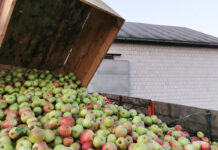




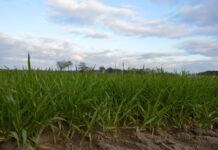

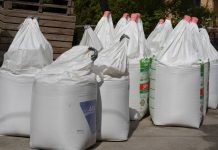




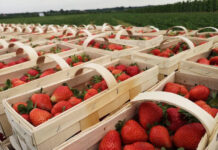
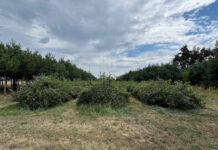
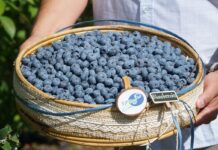
![Zimowe ceny pomidorów, ale czy wszystkich? Niektóre są mniej cenione [13.03.2024] Pomidory](https://www.ogrodinfo.pl/wp-content/uploads/2024/03/Aktualne-ceny-polskich-pomidorow-218x150.jpg)







